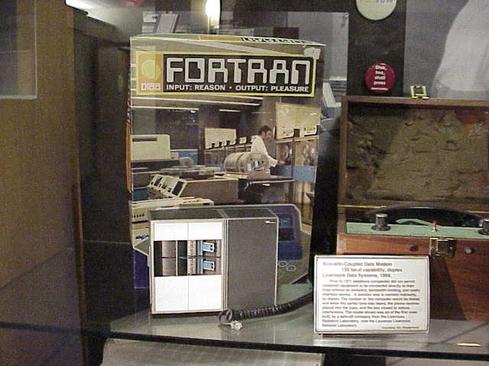How To Turn Data Into StoriesHow To Turn Data Into Stories
When Yakult, a Japan-based maker of probiotic dairy drinks, put a data analysis tool into the hands of its sales people in The Netherlands, they swapped out stale spreadsheets for stories about how the product was performing in real time.


Fortran: 7 Reasons Why It's Not Dead
Fortran: 7 Reasons Why It's Not Dead (Click image for larger view and slideshow.)
There is only so much a spreadsheet can tell you. In the case of Yakult, it was not enough to remain competitive in the Netherlands.
Yakult is a Japan-based maker of probiotic dairy drinks sold through supermarkets in 31 countries. And that is the tough part, as companies selling food products have to compete for shelf space in any supermarket they through which they sell. Any vendor that fails to maintain marketshare can disappear overnight if a retailer decides the shelf space can produce a greater return stocked with another product.
About a decade ago, Yakult was managing its Dutch market with Excel spreadsheets, generating simple graph tables for stats such as year-to-date sales and supermarket sales every four weeks, said Egbert Jan Vierkant, market analyst for Yakult in the Netherlands. "In those days, we realized there were new competitors entering the market," he said. "We realized we were vulnerable."
Yakult executives decided in 2006 to invest in business intelligence to maintain the company's competitive edge. "Spotfire was a completely unknown brand (at the time)," Vierkant said. Spotfire is a data visualization app from TIBCO Software, which can aggregate large amounts of data for query, analysis, and display.
Veirkant said the application is intuitive. "Even people with no professional background in data analysis, they get enthusiastic when they see it." he said.
Spotfire can render data as bar, fever, and pie charts, and can show scatter plots -- all standard tools of data visualization. "If you work with Excel only and you have lots of time, you are able to do the same analysis that Spotfire can do, too," Vierkant said. "The main difference is speed. Spotfire is 100 to 200 times faster than Excel."
Spotfire can render data geographically, plotting out information by the location of its origin. Veirkant used this feature to divide the Netherlands into 4,000 areas by which to analyze sales and distribution. "I know how many people live in each area," said. "We can target our marketing."
"The main advantage is that [Spotfire] can enable the plotting of multi-dimensional data into one graph." Vierkant continued. For example, store sales can be shown as a scatter plot, with each dot colored to match a specific product, and varying the size of the dots corresponding with sales amounts. You can even designate one dot to represent current sales and a second to represent year-ago sales for comparison, he said.
[ Where are the IT dollars going? Read IT Spending Reports Show A Tech Market In Transition. ]
In that manner, a lot of data can be gathered together concisely, Vierkant said. That enables Yakult reps to make good presentations to the supermarkets they visit. Instead of showing a bunch of PowerPoint slides, the rep goes straight to the data. "Spotfire turns data into stories," Vierkant said. "You don't want to talk data with retailers."
Two years ago, Yakult executives also decided to use a cloud-based version of Spotfire. Typically, there are security concerns about whether data should be taken from in-house storage and put into the cloud. But human error was viewed as the greater risk. "If I forget my laptop on the train, it is more likely than losing sales due to cloud storage," Veirkant said.
Many stakeholders were involved in the decision to deploy Spotfire, including Vierkant's manager, the division's managing director, and the IT director from the company's head quarters. Ultimately, though, the application enables Vierkant to run data sets without involving IT.
"I don't need our IT department any more," Vierkant said. “For data integration, analysis, visualization and sharing, no assistance of IT is needed at all … When I obtain new data, which I do often, I just add them to Spotfire myself in a few minutes. After that updating data requires only seconds."
Now data can be gathered from multiple sources, collected in one table, sent to the cloud. and shared with other Yakult executives elsewhere in Europe, he noted.
No application is perfect, however. Vierkant would like to see Bayesian analytic tools as part of Spotfire's features. Right now, Vierkant relies on R to do Bayesian analysis of Yakult data, which can be complicated.
Another limitation is Spotfire's ability to work with data cubes, which extract only a portion of the data from a database to respond to a query, according to Vierkant. Currently, a data query requires a SQL database to be loaded into a computer before analysis can begin.
About the Author
You May Also Like






